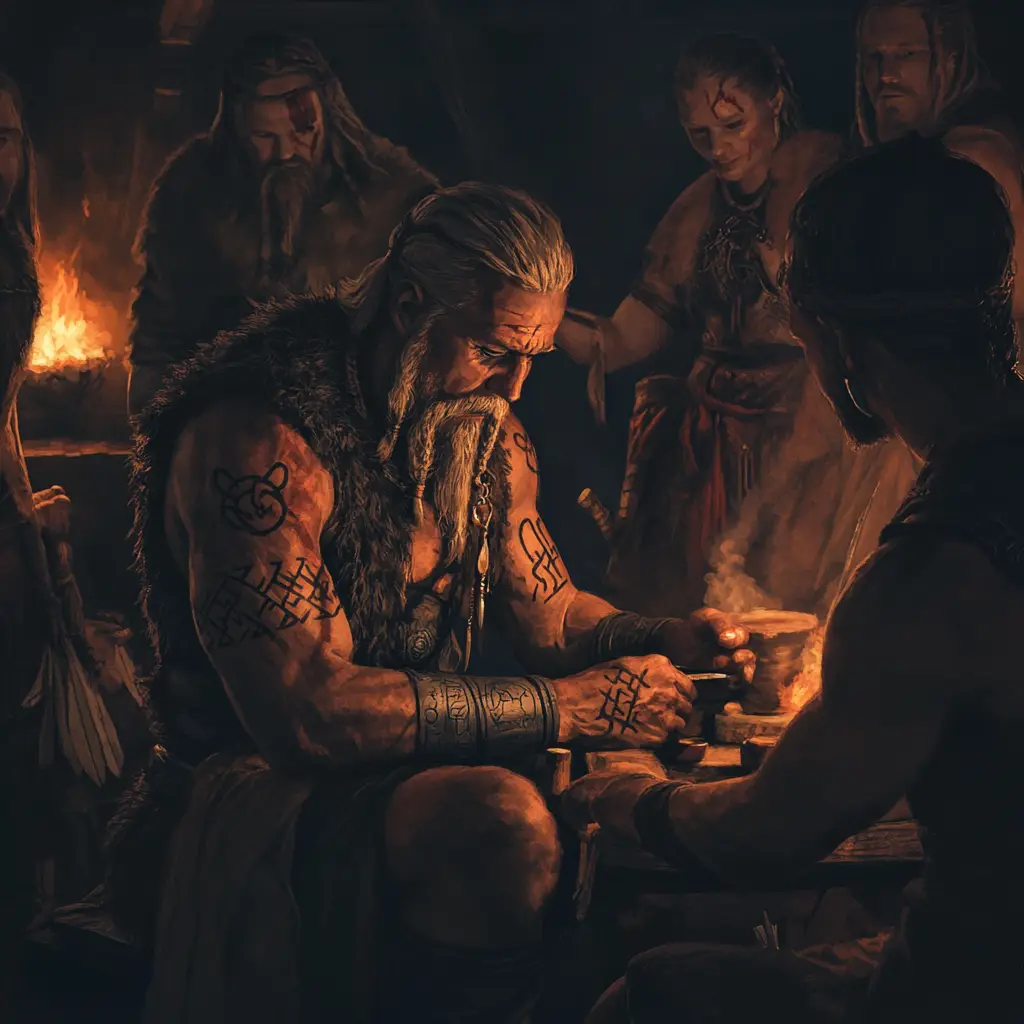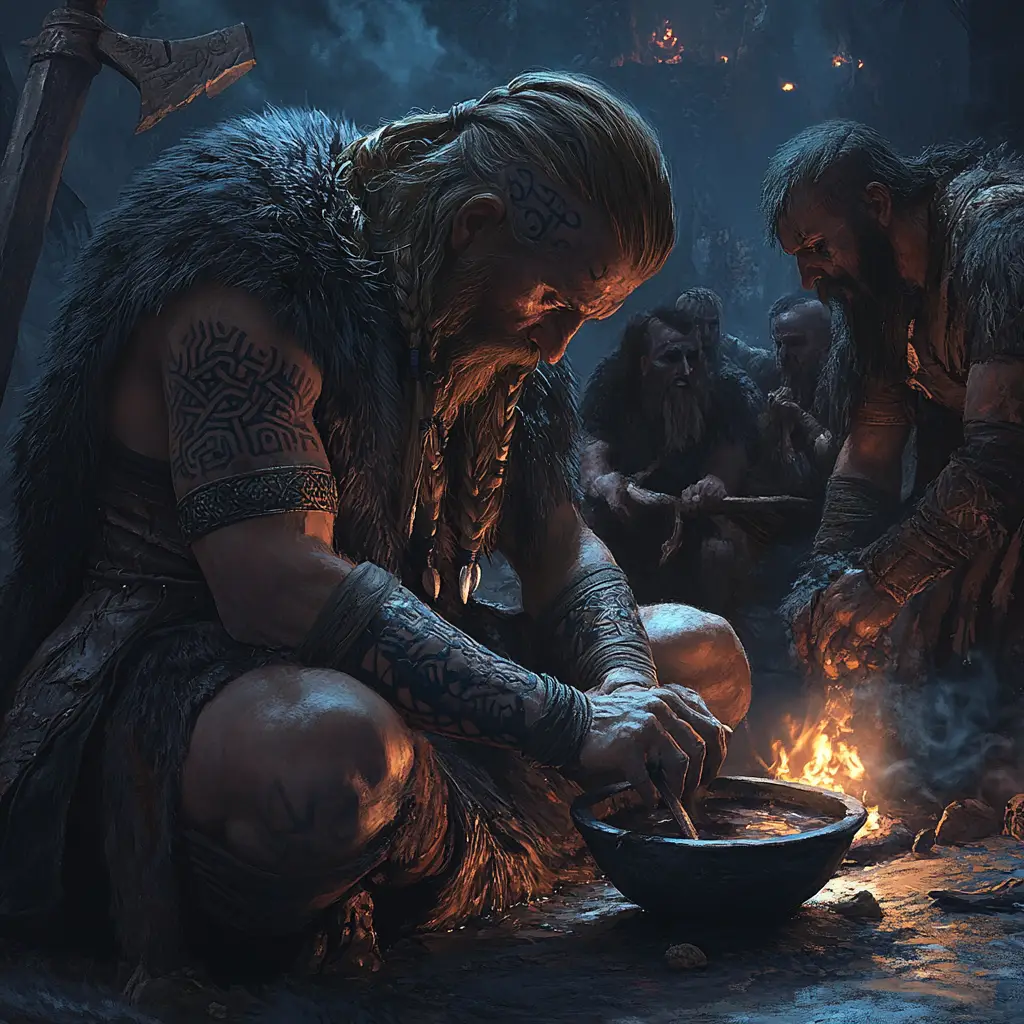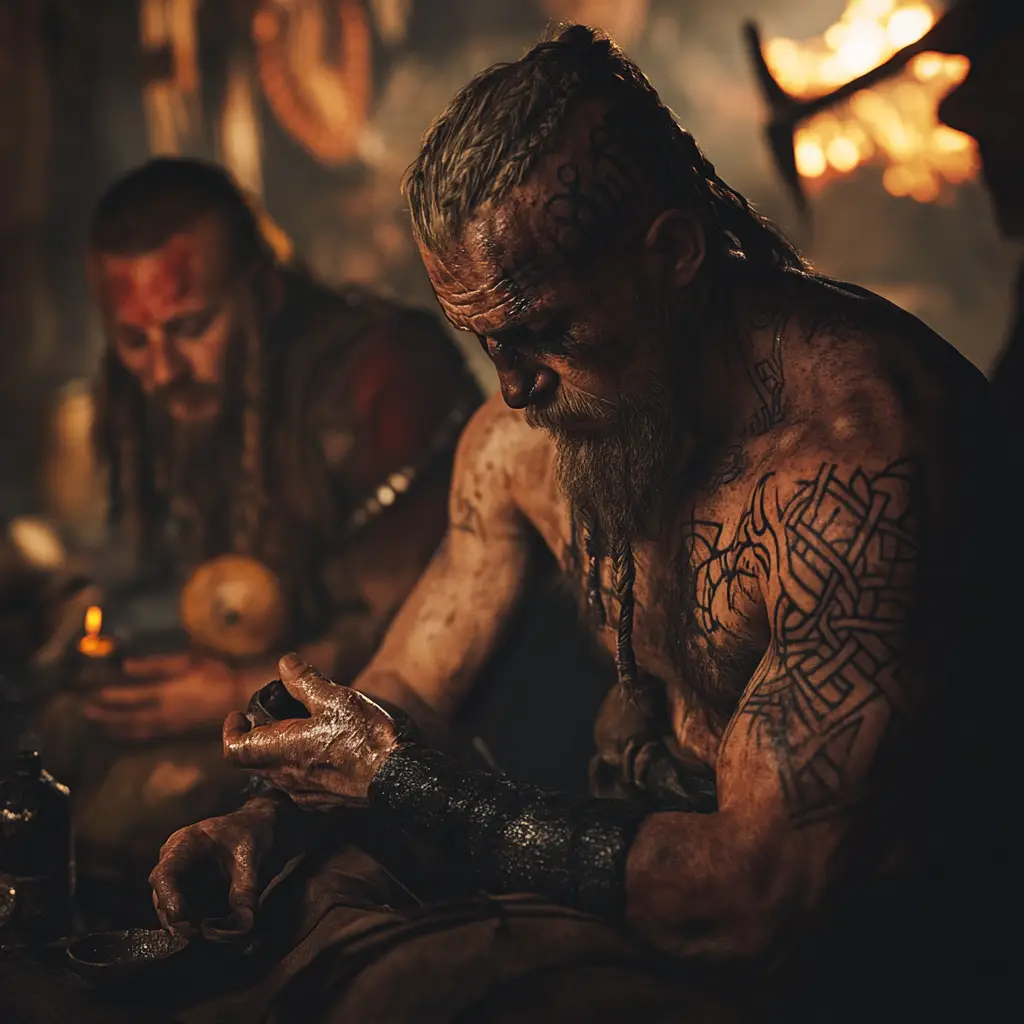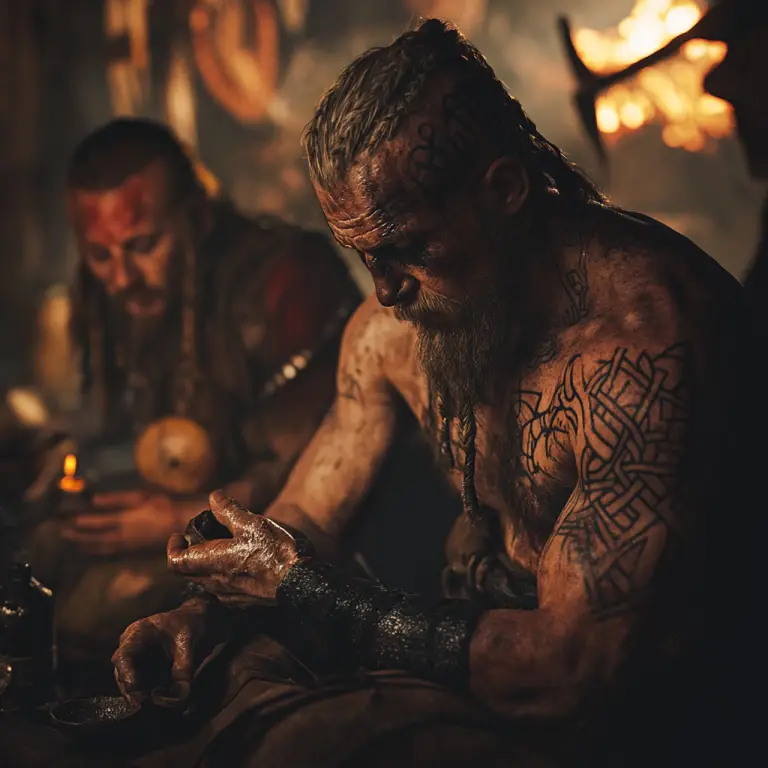Viking Tattoo Methods – Did the Norse Have Tattoos?
There is no direct archaeological evidence that Vikings had tattoos, but historical accounts suggest they may have practiced body art. The most famous reference comes from Ahmad ibn Fadlan, a 10th-century Arab traveller, who described the Rus’ Vikings as being covered in dark green or blue tattoos from their fingertips to their necks.
If Vikings did have tattoos, their methods would have been similar to other ancient cultures, using tools and natural pigments available at the time.
Possible Viking Tattoo Methods
Hand-Poked Tattooing (Stick-and-Poke)
Likely the most common technique, using bone, wood, or metal needles to puncture the skin manually.
Ink (made from charcoal, ash, or plant-based dyes) would be rubbed into the wounds to create permanent markings.
Needle and Thread Method
Used in some ancient cultures, a needle dipped in ink was threaded under the skin, creating permanent patterns.
Rubbing Soot or Ash into Cuts
Designs could have been carved into the skin with small knives or bone tools, then soot or ash was rubbed into the wounds for permanent marking.
This method is similar to scarification and would have produced bold, rough, warrior-like tattoos.
Hammer and Needle (Early Tebori Style)
A small hammer tapped a needle into the skin, similar to traditional Japanese Tebori tattooing.
This could have been an effective way to create detailed symbols like runes or geometric Norse patterns.
Viking Tattoo Inks & Pigments
Vikings may have used natural ingredients to create tattoo ink, such as:
Charcoal & Soot – Common in ancient tattooing, providing deep black or blue ink.
Ash Mixed with Urine or Fat – A method found in some ancient cultures for better ink absorption.
Plant-Based Dyes – Some Viking regions may have used dark-coloured berries or tree bark extracts.
Symbols, Meanings, and Designs
Viking tattoos my have been inspired by Norse mythology, runes, and warrior culture, often representing strength, protection, fate, and the gods. While there is no direct historical evidence that Vikings had tattoos, many believe that Norse warriors and seafarers may have adorned themselves with body art, much like other warrior cultures.
Common Modern Viking Tattoo Symbols & Meanings
Vegvísir (Viking Compass) – Guidance & Protection
A mystical Norse symbol that means “That which shows the way.” It was believed to help warriors navigate rough seas and guide them safely home.
Yggdrasil – The Tree of Life
A massive, sacred tree that connects all the realms in Norse mythology. It represents wisdom, growth, balance, and destiny.
Mjölnir (Thor’s Hammer) – Strength & Protection
Thor’s hammer, Mjölnir, was a powerful weapon that symbolized divine protection, strength, and blessings from the gods.
Valknut – The Warrior’s Knot
Three interlocking triangles associated with Odin and fallen warriors. It symbolizes bravery, fate, and the journey to Valhalla.
Ægishjálmur (Helm of Awe) – Fearlessness & Victory
A magical Norse stave symbol believed to strike fear into enemies and protect warriors in battle.
Runes – Power & Mystery
Ancient Elder Futhark runes were carved into weapons, stones, and amulets for luck, strength, and wisdom. Popular choices include:
- Algiz (ᛉ) – Protection
- Tiwaz (ᛏ) – Warrior’s honour
- Othala (ᛟ) – Heritage & homeland
Ravens (Huginn & Muninn) – Wisdom & Odin’s Messengers
Odin’s two ravens, Huginn (Thought) and Muninn (Memory), symbolize knowledge, foresight, and the connection between life and death.
Fenrir – The Bound Wolf
The giant wolf Fenrir, prophesied to bring Ragnarok, represents chaos, strength, and rebellion against fate.
Ouroboros – The Eternal Cycle
A serpent or dragon eating its own tail, symbolizing infinity, the cycle of life, and rebirth.
Viking Warrior Tattoos
Depictions of fierce Norse warriors, shieldmaidens, or Viking longships often represent bravery, exploration, and honour.
Viking Tattoo Styles
Traditional Norse – Carved, rune-like patterns with deep black ink.
Nordic Tribal – Geometric and symmetrical patterns inspired by Viking carvings.
Realistic & Portrait – Mythological figures like Odin, Thor, or Loki in high-detail.
Blackwork & Dotwork – Intricate shading and fine details for an ancient aesthetic.



